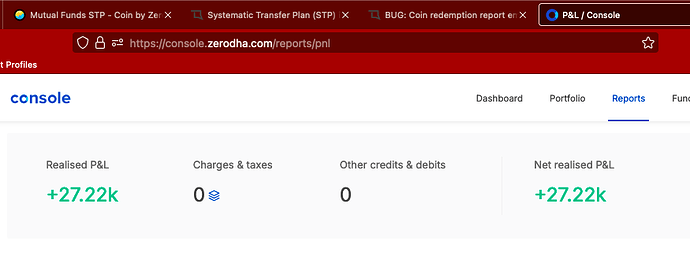What is an STP? How does it work?
STP lets a user set up automatic transfers from one mutual fund to another, making it easier for them to manage their investments without manual effort. It is a mixture of SWP and SIP; once the SWP amount is credited to the bank account as per the scheme’s settlement time, we get the notifier from BSE, and that’s when we trigger the SIP instruction that will be supported using the mandate.
Suppose you’ve invested in a liquid fund but want to gradually move those funds into other investments over time. Without STP, you would have to manually withdraw from one fund and reinvest in another every time. With STP, you can set up instructions to move money from one fund to another automatically, saving you time and hassle.
Typically, STP allows transfers only within funds managed by the same AMC. However, on Coin, you can set up STP across funds from different AMCs, giving a user more flexibility just that, unlike traditional STP, the amount is first credited to your bank account, and then using a mandate, it is pulled back from the user’s bank account and invested in the SIP scheme.
Exit load and other charges will apply as per the redemption scheme as it happens in a traditional STP. You will be able to clearly see the P&L report on console for the STP transactions as well.
How do I create a STP on Coin?
To create an STP order on Coin:
Before creating a STP you need to ensure you have an active mandate in your account, you can create a UPI Autopay that can be created instantly and will take T+1 day to process the debit request and also a bank mandate eNACH that will take T+2 day to process the debit request.
-
Click on Dashboard, then go to Mutual funds
-
Select the mutual fund you want to transfer funds from
-
Click on Context Menu and then on Create STP
On the order window, you can view details such as the units held, investment value, and Free Units - these are units that are not locked in, particularly relevant if you hold ELSS or Retirement funds.
-
Name your STP order
-
Enter the amount you want to transfer
-
Select the frequency, date if monthly, day if weekly.
-
Choose the mandate from the dropdown
-
Select or search the mutual funds from your holdings to which you want to transfer the amount
You can select a maximum of 5 mutual funds.The amount can be transferred across all AMCs’ mutual fund schemes.
-
Once you have added mutual fund schemes, enter the amount you want to transfer into each scheme, by default we show th eminimum investment amount in the scheme for an additional purchase.
-
After this, click on Create STP and then Confirm.

Once your STP order is created, you can track it from the STP tab, you have the option to Pause, Resume, or Delete the STP orders.
Note:
-
A mandate is mandatory here; we credit the funds to the bank account and then pull it back for the new schemes, in case the debit request fails, if you have a UPI autopay the bank automatically gives 9 tries during the day, in case of eNach the debit will be tried only once.
-
Is allowed from any scheme to the schemes in your holdings, if the scheme is not in the holdings, it wont be allowed; it’s mandatory to create an STP only for the schemes in holdings
-
Once the redemption request amount is credited to the client’s bank account, we punch a mandate debit request depending on the mandate type, be it autopay or nach. Depending on that, the amount will be debited on T+1 day or T+2 day.

